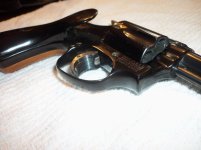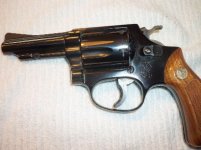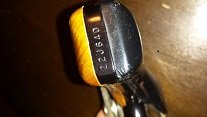22J serial #
Your model 37 Chief's Special Airweight was made between 1970 and 1973.
From 1950 to 1969, S&W numbered their J framed guns in a simple number sequence from 1 to 786,544. But, as a result of a 1968 Federal Gun Control Act requirement Smith & Wesson began a new numbering system for J frames.
Models 60, 651,32 & 33 were assigned an "R" prefix; R001-R32903 (1969-1983)
Models 30 & 31 were assigned an "H" prefix H00001-H161201 (1969-1983)
Models 36, 37, 38, 39, 49, and 50 used a "J" prefix and were a little different.
This group of J frames started with ser # J1 and went to J99,999...a letter and up to 5 digits. To maintain the one letter and max 5 digit format, S&W just moved the J one place to the right and continued the series as 1J1 to 1J9999.
They then continued with 2J1 to 2J9999, 3J1 to 3J9999 and so on until 1973 when serial number 999J99 had been reached. Confused yet?

At this time, 1973, S&W changed to the J prefix-6 digit format, J100,000, J100,001, etc. and continued in that format until the current numbering system was instituted.
The easiest way to remember it is that any J frame S&W with a serial number containing a letter J and 5 digits or less, mostly with a number (s) in front of the J, was made between 1969 and 1973. Probably only a factory letter will confirm a ship date.
You have to think about it a bit but, at least, it only lasted three years...thank goodness!



